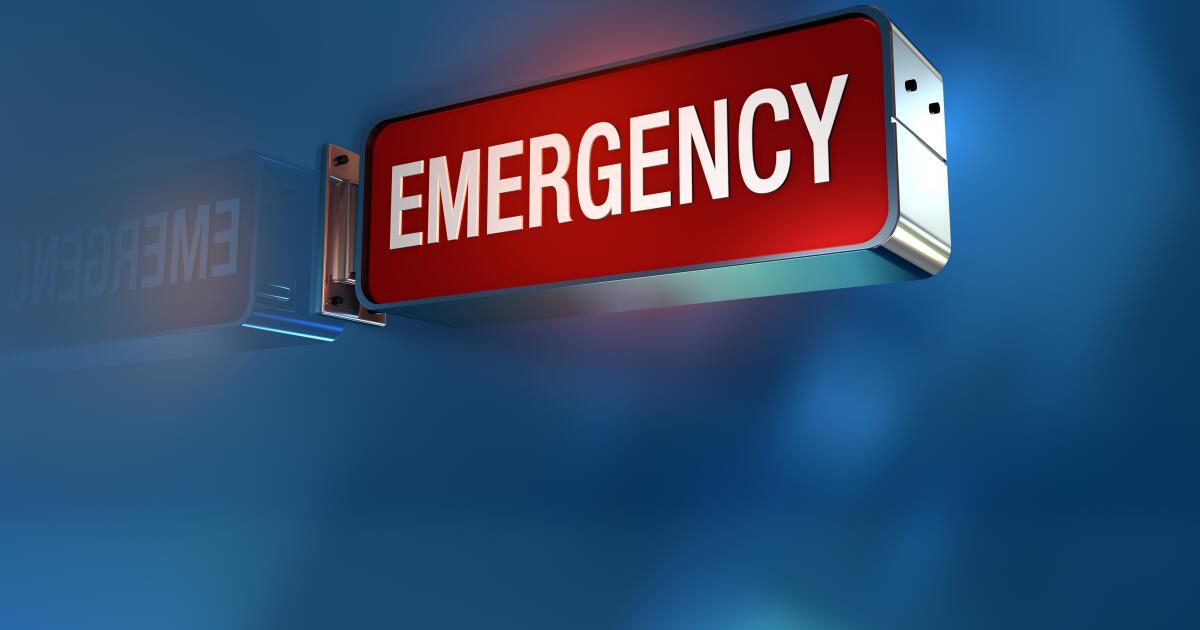Opinion: Same hospital, same injury, same child, same day: Why did one ER visit cost thousands more?
The Kaiser Family Foundation recently reported that the annual cost of family health insurance jumped to nearly $24,000 this year, the greatest increase in a decade. While insurance executives and employers may cite a plethora of reasons, one of the chief culprits is lack of oversight over the Wild West of healthcare prices.
My friend encountered a dramatic example of this last year after her 4-year-old daughter had the misfortune of suffering the same injury twice in the same day.
The girl’s parents were getting her ready for school one morning when, as her hand was pulled through a shirt sleeve, she experienced severe pain. They took her to the children’s emergency department down the road from their home in the Bay Area, where she was diagnosed with “nursemaid’s elbow” or, more technically, a “radial head subluxation.” Common in young children, whose ligaments are looser than adults’, the partial dislocation is straightforward to diagnose and treat. A simple maneuver of the elbow put it back in place in seconds.
After coming home from school that afternoon, my friend’s daughter was playing with her babysitter when her elbow got out of place again. They went back to the same emergency department and went through the same steps with another doctor.
My friend, who is fortunate enough to have good insurance and the means to pay her share, knew the bills wouldn’t be cheap. What she wasn’t expecting was such a stark illustration of the arbitrary nature of medical billing.
While the bill for the first visit was $3,561, the second was $6,056. Same child, same hospital, same insurance, same diagnosis, same procedure, same day — and yet the price was different by not just a few dollars or even a few hundred dollars, but nearly double.
How do we make sense of this? How can a patient be charged such wildly different prices for the same treatment on the same day?
Emergency room billing consists of hospital fees and professional services fees. The hospital fees include a “facility fee” that is part of every emergency room visit and coded at one of five levels. Level 1 is the simplest — someone needing a prescription, for example — while Level 5 is the most complicated, for problems such as heart attacks and strokes that require significant hospital resources. And of course there can be additional hospital fees for X-rays, medications and the like, which weren’t necessary in the case of my friend’s daughter.
The professional services fees are for the emergency physician and other providers such as radiologists. In this case, there were no fees for professionals other than the emergency room doctor.
But the itemized charges showed the two visits were billed completely differently. The first was charged a Level 1 facility fee and a Level 3 professional fee. And the bill tacked on additional fees, including hospital and professional charges for taking care of the patient’s injured joint.
The second visit, meanwhile, was charged a Level 2 facility fee and a Level 4 professional fee, both higher than that morning. But in contrast to the earlier visit, no other charges appeared.
Why was the same injury coded as more complex and expensive to treat the second time than the first? Why did the coding and billing company decide to charge for additional services for the first visit but not the second?
I know both of the physicians who treated my daughter’s friend; they work in the same group, use the same billing and coding company, and charge the same rates. So the different doctors don’t explain the discrepancy. In my practice, even treating physicians have no access to information about how billing for our services is determined.
My friend and I contacted the hospital’s billing department repeatedly, but they proved unable to provide any rational explanation.
Unfortunately, this isn’t new. About a decade ago, I published a series of studies showing how arbitrary medical billing can be. Hospitals charged fees ranging from $10 to $10,169 for a cholesterol test; $1,529 to $182,995 for an appendicitis hospitalization without complications; and $3,296 to $37,227 for a normal vaginal birth.
Only uninsured patients are asked to pay these sticker prices. But despite the “discounts” granted to insured patients through their insurance companies, these charges end up sneaking into higher premiums and other costs. Medical bills are responsible for about 59% of U.S. bankruptcies.
There are few certainties in life, but one of them is that we will all need healthcare at some point. And another, at least for those of us living in America, is that we have no idea what it will cost or why. This would never be tolerated in any other industry.
What can we do about it? Here’s where we could benefit from a government agency like the Consumer Financial Protection Bureau, which helps regulate banks and other financial entities that perpetrate what have been called “injustices against everyday Americans.” We need someone to regulate the injustices inflicted on Americans every day at the hands of the healthcare system too. Recent efforts by the Federal Trade Commission and the Department of Justice to police healthcare mergers and address other anticompetitive behavior in the industry could also help.
More government regulation and oversight won’t address the more fundamental problem that we keep trying to treat healthcare as a market good, which it clearly isn’t. But it could help ensure that treating a minor injury one afternoon doesn’t cost twice as much as it did that morning.
Renee Y. Hsia is a professor of emergency medicine and health policy at UC San Francisco as well as a Soros fellow and a Public Voices fellow at the OpEd Project.







